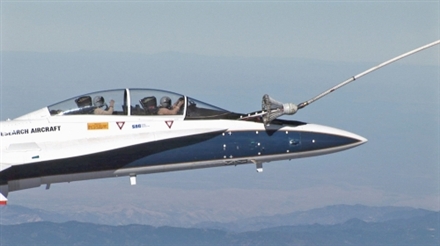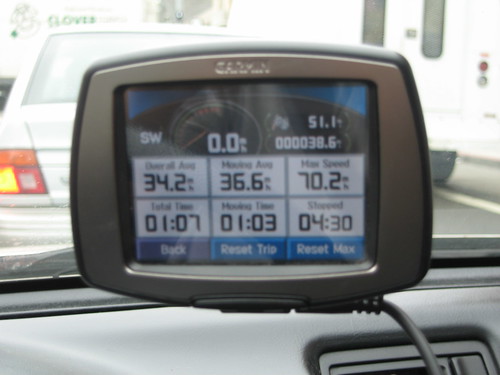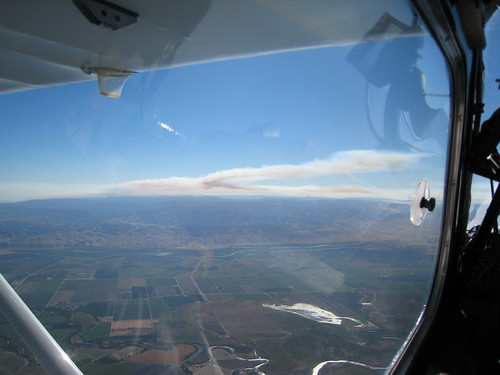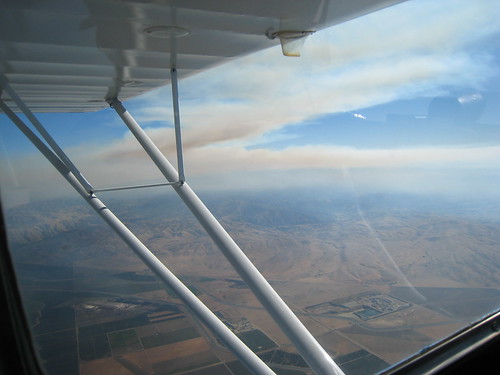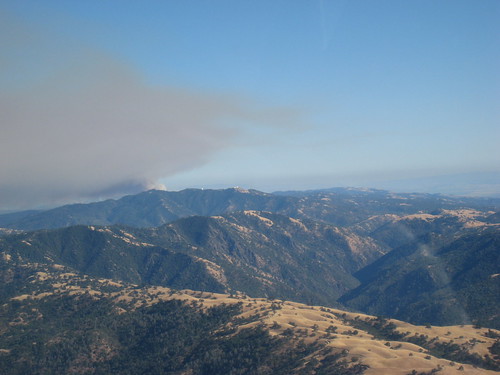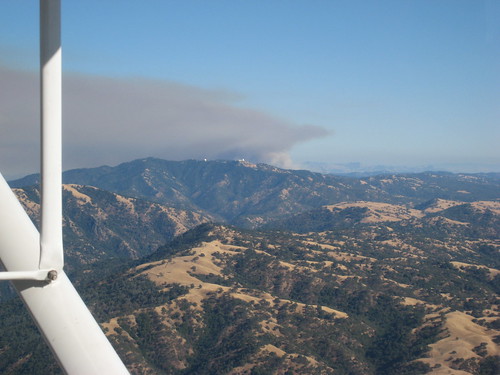September 29, 2007
Search Employees Spam!
Wow, I'm amazed and how dumb some spammers are.
Either that or I'm amazed at how dumb some spam recipients must be for this technique to ever work.
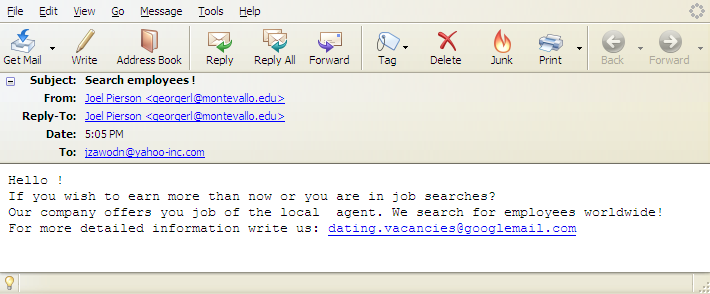
Hey, I have an idea. If the dating.vacancies@googlemail.com address hasn't already been deactivated, why don't we all send a note to get more details about these fantastic jobs?!?!
Really, who wouldn't want more detailed information on "job of the local agent"?
September 28, 2007
Bad Pilot Decisions: Three Emergency Landings in One Day!
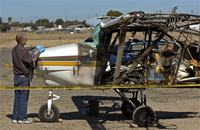 A few weeks ago this story caught my eye and I've been meaning to write about it ever since. A pilot (William Supan) flying his Piper Tri-Pacer from the Modesto Airport was taking a passenger (Jinhua Lin) for a first airplane ride. He had to make an emergency landing due to smoke coming out of the engine.
A few weeks ago this story caught my eye and I've been meaning to write about it ever since. A pilot (William Supan) flying his Piper Tri-Pacer from the Modesto Airport was taking a passenger (Jinhua Lin) for a first airplane ride. He had to make an emergency landing due to smoke coming out of the engine.
Upon landing, he apparently found a problematic hose clamp and went to the nearby Wal-Mart (not Wal-Mart Aviation Supply!) to get a replacement. He '"fixed" the problem himself, didn't get a mechanic to double-check his work, and went up again. As you might expect, the cockpit started to fill with smoke again, so he declared an emergency and landed a second time.
He checked and found that the hose had a cut in it. Apparently he replaced the hose (who knows what he used for that), because he took off a third time. But this time the engine caught fire and he made a third (and very bad) emergency landing. His passenger was spooked enough that she jumped from the plane on the runway and ended up in the hospital. That third landing cause substantial damage to the airplane (he bounced a few times and went off the runway), but the ensuing fire pretty much finished off the job.
Yikes!
In aviation safety training, it's often said that every accident is the result of a series of bad decisions, not just a single one. In this case, it's almost painful to read the story--seeing one bad decision after another, you can't help but to wonder what the guy was thinking.
I think The Modesto Bee story had a great line in it:
Ian Gregor of the FAA indicated that officials were surprised that pilot Wil-liam Supan, 52, of Pleasanton would try to take off a third time after having been forced to land twice because of smoke in the cockpit.
Hell, anyone with the smallest shred of common sense should have been surprised by that!
See Also: AVweb coverage
September 20, 2007
Instrument Flight (IFR) Training Ground School, Week #1: VFR Refresher
Last night I attended the first night of a 10 week course (3 hours for 1 night each week) to prepare for the FAA's Instrument Flight Rules (IFR) knowledge test. As part of reinforcing what we cover each week, I'm trying to write up a quick summary of each night's topics.
 Sometimes typing things is a good way to refresh them in my own mind. Besides, you never know who might stumble onto this later and find it useful.
Sometimes typing things is a good way to refresh them in my own mind. Besides, you never know who might stumble onto this later and find it useful.
Introductions & Overview
Most of the first night was spend on introductions (meeting each other and our instructor), an overview of how the class will work, and some refreshers on various topics we all learned during our private pilot training.
Books
The main text for the course is the FAA's Instrument Flying Handbook which is available for free on-line. In addition, we're going to use the ASA Instrument Rating Test Prep for practice questions.
For additional reading, he suggested Jeppesen's Instrument/Commercial Manual and the FAA's Instrument Procedures Handbook. I'm told that those two do a better job of understanding the whole air traffic system and rationale behind why IFR operations work the way they doing.
Since I tend to remember things better when I understand why they work the way they do, I'm tempted to pick up those as well.
Finally, I have the King Schools Get It All Kit for the Instrument Rating. I've used their videos in the past and found them to be far superior to those from Sporty's.
VFR vs. IFR
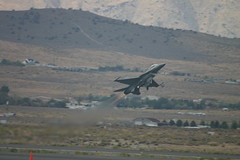 We spent a bit of time discussion the pros and cons of VFR vs. IFR flight, generating a list that looked something like this.
We spent a bit of time discussion the pros and cons of VFR vs. IFR flight, generating a list that looked something like this.
Pro IFR:
- Safety
- Charts have altitude info you need
- Get through weather
- Don't get stuck as often
Con IFR:
- Longer routes (takes more gas and time)
- Have to deal with controllers and radio
- Higher workload
Human Factors and Aeronautical Decision Making (ADM)
We spent a fair amount of time reviewing human factors, including medical issues, illusions, disorientation, night vision, and stress. We also talked about the FAA's IMSAFE (Illness, Medical, Stress, Alcohol, Fatigue, and Eats) self-assessment checklist.
In the real of ADM, we briefly recalled the FAA's DECIDE (Detect, Estimate, Choose, Identify actions, Do, Evaluate) model for dealing with situations. Everyone has to learn it, but few people actually think through it that way in reality.
Cockpit/Crew Resource Management (CRM)
Cockpit or Crew Resource Management is going to be a much more important skill to develop in IFR flight than our normal VFR operations. There's more paperwork in the cockpit, instruments to watch, and radio communication to deal with. So having a logical and predicatable system for organizing the physical objects (checklists, books, charts, flight plans, etc.) and other information is critical.
Having your flight plan handy is good for when the controller says "cleared as filed" rather than giving you a set of waypoints to copy down. :-)
Aerodynamics
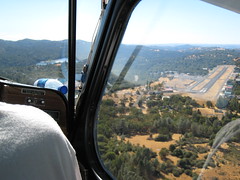 We concluded with a review of basic aerodynamics, including: indexing the airplane performance (for speeds and descent rates), angle of attack, flight path, pitch attitude, lift/drag/thrust/weight, and the various V speeds that come into play. We also talked a bit about the region of normal command and aircraft speed & pitch stability when using trim.
We concluded with a review of basic aerodynamics, including: indexing the airplane performance (for speeds and descent rates), angle of attack, flight path, pitch attitude, lift/drag/thrust/weight, and the various V speeds that come into play. We also talked a bit about the region of normal command and aircraft speed & pitch stability when using trim.
Other Stuff
I learned that following the VASI exactly at an airport will set you down at the 1,000 foot mark on most runways. That could be a very useful bit of trivia.
We also had chances to share stories about being, uh... surprised by weather in our flying.
September 19, 2007
Comfortable and Great Quality Headphones: Sennheiser HD-595
Late last summer I became frustrated with the Sony MDR-V6 Headphones that I've been a fan of for so long. Don't get me wrong. They still sound great and do an excellent job of blocking out noise.
The problem was, and this took me quite a while to figure out, that the ear cups are a bit too small. That meant that I'd have sore ears after wearing them for more than an hour hand a half or so. With that in mind, I set about trying to find the impossible: a pair of headphone that sound just as good, fit more comfortably around my ears (and glasses), and would be able to handle a lot of use.
After reading a lot of reviews and some some discussions on email lists at work, I settled on the Sennheiser HD-595. Not only do they have excellent sound quality and a very long cord, they definitely fit comfortably. I've been using them a lot in the last few weeks and have absolutely no ear pain or discomfort at all. They're truly excellent headphones. It's no wonder these get a 5-star rating by buyers on Amazon.com and the reviewers on AudioReview.com.
September 13, 2007
The ass won't kick itself
Ryan Kennedy, a fellow Yahoo, recently wrote about an experience I've had more than a few times: interviewing with another company, receiving a good offer, and ultimately deciding to stay at Yahoo.
I hadnít really set out to look for a new job, but the idea was enticing. A healthy company, good environment, smart people, fun products. The choice ahead of me was pretty obvious. So obvious that I threw caution to the wind, declined the offer and stayed at Yahoo!
If I'm counting right, that's happened to me roughly five times in the last 6 or 7 years. It's not that I was dying to get out of Yahoo, but I was certainly curious to see what else the world had to offer. And then there are the dozen or so other companies I've casually talked to without going through a formal interview process.
Like Ryan, many of my "job shopping" experiences happened during times that things felt rather down around here. He describes the current situation thusly:
Iím not going to lie to you, itís rough going right now. We get smacked around by the media. Itís been a while since we had a really big, notable win. I think morale at the company is low, the future uncertain and the food still sucks (although, Iíve had worse). But despite that, we had a record turnout for our last internal hack day. We had so many people with ideas that we had to completely change the format of the event because the campus could no longer scale to meet our demands. There is still plenty fight in this company and we have no shortage of asses to kick. So lace up all you Yahoo!ís... the ass wonít kick itself.
I couldn't agree more. The ass certainly won't kick itself.
I've been involved in a lot of ambitious discussions in the last few weeks. They're all about aspects of Yahoo's future and how to get more of that ass kicked. I don't claim to know what the future holds, but I'm still here.
September 12, 2007
BusinessWeek on Openness at Yahoo!
On Tuesday an article titled Yahoo's Open Invitation appeared on BusinessWeek. It's presumably in the print edition as well, but I haven't checked.
While what I'm saying here are my personal thoughts as a long-time Yahoo, they may not agree with the official party line at Yahoo. So please don't assume they're one in the same.
First off all, the subhead for this story is the longish:
Like counterparts at Facebook, CEO Jerry Yang plans to give developers more leeway in building tools designed to keep users on its pages longer
Which gives you an idea of the angle that this story is going to take. It's going to be about Yahoo being a Facebook copy-cat and a fast follower who's struggling to boost metrics around page views and time spent.
Let's have a look...
Openness When?
This year, openness is the buzzword ringing through Yahoo's Sunnyvale (Calif.) campus, and executives hope it translates into a strategy that helps set fortunes right. In the months since Yahoo co-founder Jerry Yang replaced Terry Semel as chief executive officer, company leaders say they're newly focused on opening Yahoo's real estate to outside developers, who in turn can create tools that make Yahoo's pages more attractive to users.
Believe it or not, we've been doing the "openness" thing for a lot longer than that around here. Now I may be biased, since I was part of the team that launched our developer network back in 2005. It quickly grew beyond the world of search and has been going at a steady pace ever since.
Not only that, but we invited hundreds of developers to our Sunnyvale campus for a weekend-long Open Hack Day and the repeated the event recently in London. And there's another coming up in Bangalore.
Hack Day got the campus buzzing too--even before people figured out that Beck was performing. :-)
API, not Source Code(s)
Already the company has released the source codes for Yahoo's e-mail in hopes of letting third parties create small programs, known as widgets, that mesh with users' address books and other mail services.
That's not quite true. We didn't give away the source code (plural or singular) for our email service. We did, however, release an API for Yahoo! Mail.
Evolution
Yahoo's focus on openness is partly a proactive embracing of the consumer Web ethos, where users play a key role in creating content. And in part it's a defensive measure to keep from losing user attention to innovative up-and-comers.
Again, this openness thing isn't new. And painting it as both proactive and reactive is a little weird. We're just evolving Yahoo as the rest of the web evolves. It's that simple, really. The larger context is missing from this story, IMHO.
What is new is that openness is becoming more bidirectional. Instead of offering outbound APIs, the article is talking about plans for inbound APIs as well. But if that had been included in this story, it'd have a less powerful "Yahoo copying Facebook" message, I guess.
We do get credit later on for My Yahoo accepting third party content and modules. Heck, that's been around for a long time. In fact, I was involved in that effort and wrote about the My Yahoo! RSS Beta back in January of 2004.
Right. 2004.
Doom and Gloom
The article then says a bunch of negative stuff about being more open (again bringing in Facebook as an example) before finally admitting that this could be a good thing:
Still, Yahoo, like Facebook, is likely to see more positives than negatives from an influx of tools and other content that keep people on Yahoo's site longer.
If that's the case, I'm not sure why the author chose to lead with the negatives, but at least the story gets around to talking about why this is good. Unfortunately it focuses mainly on the goal to "keep people on Yahoo's site longer" and fails to consider how this extra time spent is because Yahoo will be a better place after opening up--just like Facebook was. As written, the reader is almost left to assume that openness is almost some sort of a trap for users.
Conclusion
I'm glad to see the idea of openness getting more play in the mainstream business press. But I wish someone would write a story that includes a bit more of the bigger picture of how the web is changing. And it'd be nice if they explained the difference between outbound and inbound openness too. Otherwise the reader is left with a very incomplete picture of what's going on. It also makes this whole thing feel a bit more rushed than it actually is.
Yahoo! Open Hack Day in Bangalore!
Good news for those of you who read this from half way around the world. Yahoo's Bangalore office is hosting an Open Hack Day on October 5th and 6th.
We were struck by lightning twice at Hack Day in London, and now we're back for more. We're pleased to announce that we plan to hold another open Hack Day in Bangalore on October 5th and 6th, 2007.
We'll be inviting 200 developers to attend the event, which will begin with hack-related presentations from some of the Web's most respected developers. We will then dive into 24 hours of hacking on a very nice collection of tools, APIs, and data, and end with awards from the sponsors plus bragging rights until the end of eternity or the next Hack Day, whichever comes first.
The Hackday.org site has all the details, of course. And, as I wrote on the YDN blog:
I happen to have an insider tell me that they're going to have good wireless and a 20Mb/sec link to the Intertubes!
If it's anything like the Open Hack Days in Sunnyvale and London, it should be a blast. Head over to Hackday.org and sign up.
September 11, 2007
Automated In-Flight Refueling of an F/A-18 Fighter Jet
This is one of the coolest things I've heard about in a while and I've been meaning to post about it for weeks now. You see, one of the trickiest thing that many fighter pilots have to learn (aside from carrier landings if you're in the Navy, that is) is how to re-fuel in the air.
Modern aircraft have incredibly capable autopilots that use a mix of GPS and inertial sensors to get a very accurate idea of where the plane is and where it is going. But re-fueling has always been a manual job--until now.
A DARPA project to figure out if computer could do the job has proven successful.
Sierra Nevada Corporation in Sparks, Nevada did most of the software work to tie in the optical sensors that fed into the navigation system (the "Autonomous Airborne Refueling Demonstration (AARD) system") once the jet was close enough to the fuel line. There's also an excellent write-up by the pilot in the front seat of that photo (the one with his hands up) in the current issue of Air & Space Magazine
Autonomous in-flight refueling. Who'd have thought?
September 09, 2007
Eudora, Penelope, and Confusion
Reading the ReadMe file for Eudora 8.0 the other day, I found myself scratching my head a little bit.
Let me show you what I mean:
Whereas "Eudora" is a branded version of Thunderbird with some extra features added by the Eudora developers, "Penelope" is an extension (also called an "add-on") that can be used with either Eudora or Thunderbird. The Eudora installer includes the corresponding version of Penelope along with it so there is no need to install Penelope if you are installing Eudora. Most features in Penelope can be accessed when used with Thunderbird, but there are a few that require Eudora in order to work correctly and it's not something that gets tested.
I had to read that 3 or 4 times before I was relatively sure I understood what was going on. I can't help to feel like it couldn't have been written a bit more clearly somehow--or even illustrated with a bit of ASCII Art.
September 07, 2007
Bay Area Traffic Sucks
A few days ago, and again this morning, I mentioned going to the Office 2.0 Conference in San Francisco. Well, despite my best efforts to get there on time, Bay Area Traffic managed to completely torpedo that idea.
Before 11am today I had already spent just about 3.5 hours in the car. It's absolutely f'ing crazy. I mean just over-the-top nuts.
It should NOT take 2 hours and 10 minutes to make the 52.2 mile drive from my house in San Jose to downtown San Francisco.
Yet it did. And there were no accidents along the way. Just a lot of slow moving traffic, often stop and go, full of people who couldn't merge to save their lives, and the nagging sense that billions of dollars are going down the tubes every year because of how completely inadequate our transportation infrastructure is.
The metering lights that are supposed to regulate traffic flow onto highway 101 appear to be completely screwed up in the South Bay. They were definitely not helping much. At each major on-ramp I found myself slowing to almost a stop--if not stopping entirely.
It took nearly an hour to get less than half way there this morning. It was at that time that I thought to reset the trip counters on my GPS so that I could capture my average speed. The picture you see above was from San Francisco just before I arrived. So you can see that the average speed for the second "half" of the trip was barely 35 miles per hour.
How frustrating.
By the time I reached Sam Mateo, it was clear that I was going to be very late. But I decided to keep driving just to see how late I'd be.
I know, I know. I should have taken Caltrain instead. Sure, that might have helped me today, but it does little to help the real problem. We need more lanes on the highways around here!
If even a tiny fraction of the people on the roads switched to Caltrain, it'd be over capacity. At least that's what I've heard from Caltrain officials on the radio in the last couple of years.
I'm utterly amazed that the folks who've been doing city and transit planning for the last 10-15 years or so haven't been hung in public by frustrated commuters.
To the folks at the Office 2.0 Conference: I'm sorry for missing the panel this morning. I was looking forward to it.
I wish I had a Toyota Prius. At least I'd have been able to use the carpool lane.
SEO Humor
As seen on SEO Theory:
Jeremy Zawodny was working hard one day when Jerry Yang called him. "Jeremy, I have a mission for you," Jerry said.
Jeremy was ready to go. "Anything, Jerry! Just name it!"
"I want you to hire Matt Cutts away from Google," Jerry said. "Offer him 3 months' vacation a year. Offer him double his current salary. Bring him to me, Jeremy. I know you can do that."
"Double his salary! 3 monthsí vacation! Wow!" Jeremy said. "So if hire Matt Cutts, what will be in it for me?"
Jerry said quietly, "Well, there will be a job opening at Google..."
I admit it. That did make me laugh. :-)
As George Carlin once said, every good joke has at least on exaggeration--one thing that's waaaayy out of proportion with everything else. Can you spot it?
While you noddle on that, I'm heading up to the Office 2.0 Conference in San Francisco this morning.
September 06, 2007
Free or Cheap on-line Fax Service?
Dear Lazyweb,
I seem to find myself needing to send (and occasionally receive) faxes now and then.
When I'm at work, this is no big deal. I can abuse the company fax machine for a few minutes here and there. But sometimes I'm at home or have some downtime in a waiting room or at a conference booth and would like to use the big, bad Internet to solve this high-tech communications problem.
Can you recommend a free or cheap (maybe one that accepts PayPal) service that takes documents (TIFF or PDF) via web form and will fax them to the number of my choice?
I keep thinking that the fax will die off, but it continues to add work to my life.
Thanks!
September 05, 2007
Henry Coe State Park Fire Pictures
On Monday afternoon while flying back from Columbia (pictures), we noticed what looked like some dark clouds over the Diablo range. But as we started to cross the valley and go closer, it became clear that we were looking at a pretty good sized fire.
And, worse yet, I realized that if we wanted to fly straight back to Reid Hillview airport, we'd have to go through a lot of thick smoke.
So we diverted a bit to the north, flying over Tracy and Livermore before heading to San Jose. Along the way, we got a pretty good view of the fire and snapped the pictures you see here.
We were impressed by how close the fire is to to the Lick Observatory. They're probably not getting a very good view of the sky with this going on.
As of today, the fire in Henry Coe State Park is still burning rapidly and over 1,200 fire fighters are working to contain it.
iPhone: Keep it or Sell it?
 As I mentioned earlier, I now have an iPhone. That's all well and good, but there's a problem.
As I mentioned earlier, I now have an iPhone. That's all well and good, but there's a problem.
I can't figure out what to do with it.
You see, I have no reason to switch cell phones or carriers at this point. In fact, that'd be counterproductive for a number of reasons that I won't bother to enumerate right now. I'm willing to keep the iPhone and simply get a data plan for it. Why? Let's face it. The iPhone is appealing to me as a tiny portable computer with Wifi and cell network access. That fact that it can also make voice calls isn't terribly interesting or useful to me.
But when I checked, I found that the AT&T iPhone rate plans are 2 to 3 times more than I'm willing to spend on this. Even the cheapest one is $60+/month with a 2 year commitment.
Yikes! Everything about Apple hardware is expensive, huh?
So on the one hand, I can simply sell the phone and use the money for something else. I suspect that I'd have no trouble doing so.
But on the other hand, I keep hearing that in a few days someone will be selling software or some bit of voodoo that will allow me to use the iPhone on another carrier--maybe one with a data-only plan for something closer to $20/month.
So I'm torn. Do I just sell it and make some quick cash. Or do I invest the time and energy into unlocking it and finding a carrier who is more reasonable for what I'd like to do?
I haven't had time to track down the current state of unlocking iPhones and what the other carriers offer. Have you?

